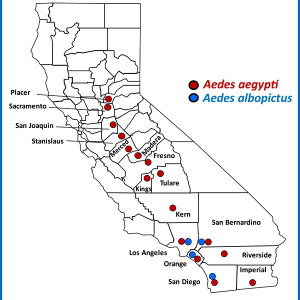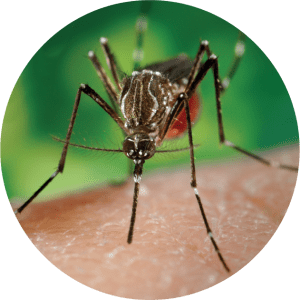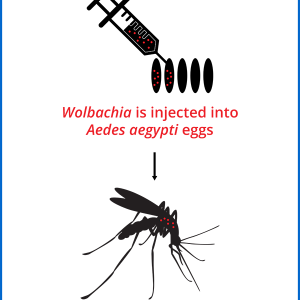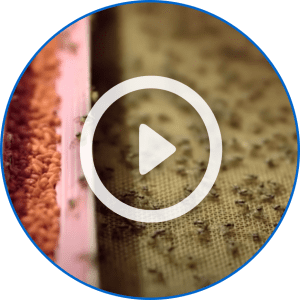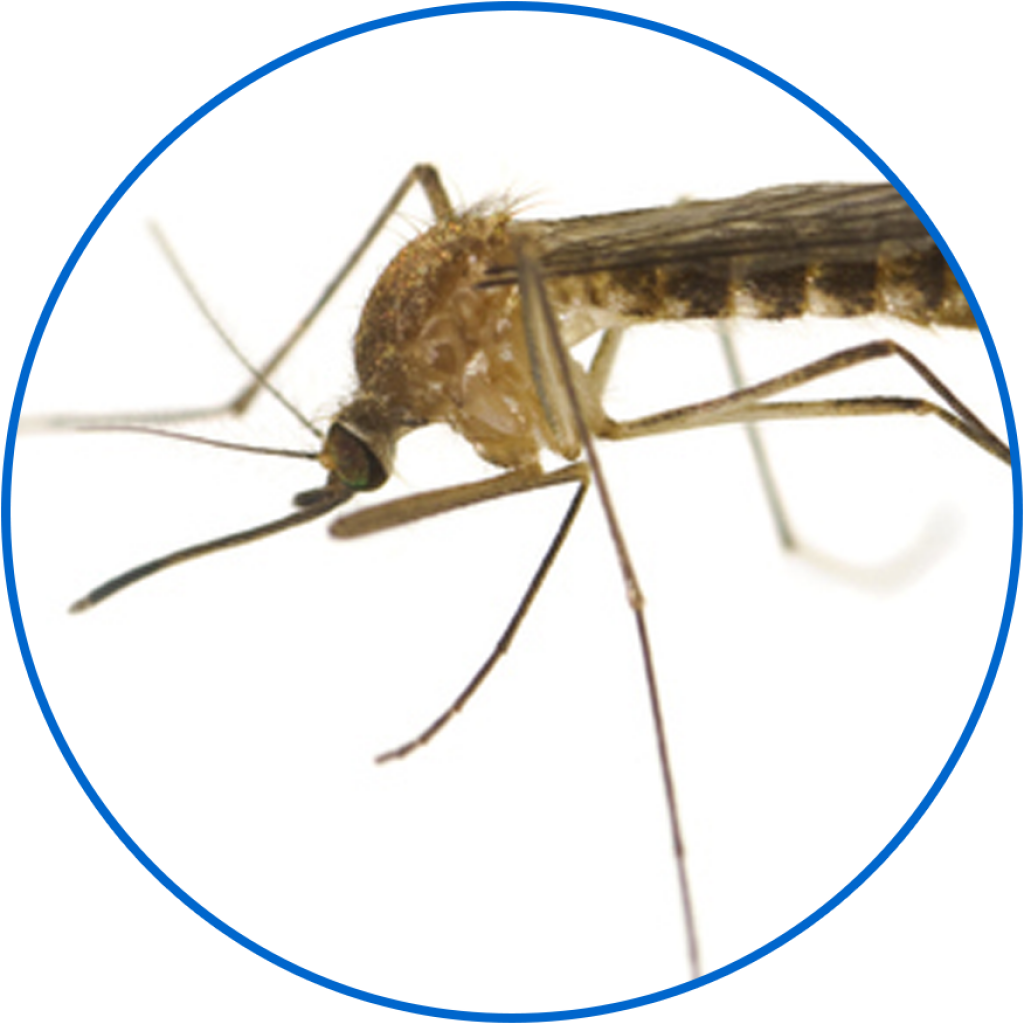INNOVATIVE CONTROL METHODS AGAINST INVASIVE MOSQUITOES
In 2019, the invasive mosquito Aedes aegypti was found in Sacramento County. Upon the initial detection, extensive surveillance and control strategies were implemented to control populations and limit their expansion into other District areas.
Invasive mosquitoes, which are permanently established throughout California (see map) are more than a nuisance and can pose a huge public health threat. These mosquitoes are efficient vectors of debilitating diseases such as dengue, Zika and chikungunya that kill thousands of people each year throughout the world. Therefore, finding and implementing innovative methods of controlling these mosquito populations and limiting their abundance is very important.
A novel approach that has been recently used by mosquito control districts in California in the fight against invasive mosquitoes is the use of the Sterile Insect Technique (SIT). SIT is an environmentally friendly insect control technique which involves the mass rearing and sterilization of male mosquitoes using different approaches followed by their release into designated areas to mate with wild female mosquitoes resulting in no offspring and a significant decline in mosquito populations. SIT was first developed in the USA and has been used successfully for more than 60 years by many agencies for a variety of insects including screwworms, moths, fruit flies and other agricultural pests. The Consolidated Mosquito Abatement District in Fresno County in partnership with Verily and MosquitoMate recently concluded a successful three year pilot project called DeBug Fresno involving SIT to reduce populations of Aedes aegypti mosquitoes by 95% in various communities throughout the Central Valley.
LEARN MORE ABOUT
STERILE INSECT TECHNIQUE
STERILE INSECT TECHNIQUE
Frequently Asked Questions about SIT
Read this blog about SIT and DeBug Fresno.
METHODS OF SIT IN MOSQUITOES
Wolbachia
Wolbachia is a safe and natural bacteria that is present in up to 60% of insect species including butterflies, dragonflies, moths and some mosquitoes. However, Wolbachia is not present in the Aedes aegypti mosquito and it is used to reduce the ability of mosquitoes to transmit viruses such as dengue, Zika and chikungunya.
How does SIT using Wolbachia work?
If a female insect that does not have Wolbachia mates with a male insect that has Wolbachia, her eggs will not develop or hatch, producing no offspring. The release of male Aedes aegypti mosquitoes with Wolbachia will increase the likelihood of incompatible matings and thus reduce the local population of Aedes aegypti mosquitoes.
When male Wolbachia–carrying Aedes aegypti mosquitoes mate with female Aedes aegypti without Wolbachia, their resulting eggs do not hatch. This is because such matings are biologically incompatible. Thus release of male Wolbachia–Aedes aegypti will lead to a decline in the Aedes aegypti population in the field over time. The outcome of this approach is consistent with our current emphasis on source reduction (removal of breeding habitats).
This mosquito suppression strategy is species-specific. Release of male Wolbachia-Aedes aegypti will only impact the Aedes aegypti population in the field, and not other insects.
How is Wolbachia introduced into Aedes aegypti?
Wolbachia is not found in Aedes aegypti in the field. Wolbachia is introduced into Aedes aegypti eggs via microinjection. Female Wolbachia–Aedes aegypti mosquitoes that emerge from these eggs will pass Wolbachia to their offspring (maternal transmission). This process allows us to produce Wolbachia–Aedes mosquitoes easily.
LEARN MORE ABOUT
WOLBACHIA
WOLBACHIA
Detailed Wolbachia information from the National Environment Agency.
World Mosquito Program video on Wolbachia
What is Wolbachia video from the Greater Los Angeles Mosquito & Vector Control District
Singapore Wolbachia suppression study
IRRADIATED MALE MOSQUITOES
This SIT strategy involves the mass-rearing and sterilization of male mosquitoes using radiation followed by a wide release of the sterile males over defined areas. The irradiated males will mate with wild females resulting in no offspring and a reduction in mosquito populations that can pose a public health threat.
Key agencies have utilized this irradiated SIT technique
The California Department of Food and Agriculture (CDFA) successfully utilized this method to control Mediterranean fruit fly infestations in citrus and other fruit trees.
>> Read More
The United States Department of Agriculture (USDA) has also had tremendous success using SIT to control screwworms, a devastating cattle pest.
>> Read More
Most recently, a similar program Sterile Insect Release (SIR) is being used in the Okanagan-Kootenay region of British Columbia to help significantly reduce populations of the codling moth which destroys apples and other fruit trees.
>> Read More
LEARN MORE ABOUT
IRRADIATION
IRRADIATION
International Atomic Energy Agency (IAEA) on irradiation and sterilization in male mosquitoes
A history of Medfly in California
GENETIC MODIFICATION OF MOSQUITOES
Oxitec is a British company exploring biological insect control techniques in the fight against Aedes aegypti. This method can be applied to a variety of pests ranging from mosquitoes that transmit disease to other insects that can damage crops. While this technique is being explored in the Florida Keys, the Sacramento-Yolo Mosquito and Control District currently has no plans to pursue genetic modification of mosquitoes.
Non-biting and self limiting mosquitoes
Oxitec’s Friendly™ safe, non-biting male mosquitoes are designed to suppress local wild populations of disease-spreading mosquitoes. Friendly™ mosquitoes carry a self-limiting gene, which means that when Friendly™ mosquito males mate with wild females, their offspring inherit a copy of this gene, which prevents females from surviving to adulthood. Since these females do not mature to reproduce, there is a reduction in the wild pest population.
LEARN MORE ABOUT
FRIENDLY™ TECHNOLOGY
FRIENDLY™ TECHNOLOGY

Click the Aedes aegypti icon on this Oxitec page to learn more about Friendly™ Aedes aegypti mosquitoes.


